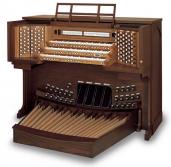Glionna Mansell Corporation Presenting the world's finest Classical, Digital and Digital-Pipe Organs

- Gordon D. Mansell Concert Organist
- Glionna Mansell Presents Organix 16
- Gordon D. Mansell Concert Organist
- MOSAIC Canadian Vocal Ensemble
- Organix Concerts - Broadcast Edition
- Gordon D. Mansell - Concert Organist
- Croatian Martyrs selected Bravura™ L122 organ
- St. Cuthbert’s Anglican Church selects the Rudy Lucente RL-58 organ from Allen’s newest series of Quantum organs
- Andrew Michalewski selects the Allen French Terraced Q285 Heritage edition organ for his residence
- Glionna Mansell announces new products from Allen Organ Company
- Organix 2012 Schedule
- Glionna Mansell sole owner and producer of Organix Concerts
- Glionna Mansell Launches New Campaign
- Holy Cross Parish in Kemptville selects an Allen Renaissance Quantum organ.
- Église St. Jacques d’Embrun selects the Allen MDS 40-S organ.
- Glionna Mansell Corporation Sponsors ORGANIX CONCERTS
- Thornhill Presbyterian Church selects the Allen Protégé™ L226 organ
- Organix 2013 Schedule
- Allen News from Europe
- Glionna Mansell Corporation Presents Operatic Obsessions
- Diane Bish will perform the inaugural concert of the new Allen organ at St. Patrick’s
- St. Patrick’s Catholic Church - Mississauga HIII-350D
- St. Christopher’s Catholic Church - Clarkson. Q265D
- St. Philip the Apostle Catholic Church - Oshawa. L9
- St. Thomas the Apostle Catholic Church - Markham. HII-45
- St. Michael’s Choir School – Toronto: L9
- St. Mark’s Catholic Church - Toronto. Q265D
- The Light Korean Presbyterian Church - Mississauga. Herald Speakers
- St. Maximilian Kolbe Catholic Church - Mississauga. Q385C
- St. Michael’s Choir School - Toronto. Elite Opus IV

Find out all about what is going on with organ installations as well as the featured events across the GTA
March 3rd 2009
St. Maximilian Kolbe Catholic Church - Mississauga. Q385C
St. Maximilian Kolbe Catholic Church selects true pipe-organ sound in a new Allen Renaissance Quantum™ Q385C organ.
St. Maximilian Kolbe Catholic Church in Mississauga, Ontario, will be taking delivery of a new organ in June, 2009. The Q385C is an 80-stop tracker-touch, three-manual digital masterpiece with 6 stop-lists easily accessed from the on-board library. From Baroque and Cavaillé-Coll to American Classic, this library offers the organist a palette of 480 colours of sound.
For the ultimate in flexibility and the thoughtful presentation of liturgical music, the organ is also equipped with Allen’s advanced Allen Quantum Q385c VISTA™ MIDI providing the opportunity for the organist to add orchestral voices to the music, to record these voices or to access a hymn library of over 150 hymns. The EAC™ (Expanded Audio Capabilities) enables amplification of electric keyboards, guitars and CD players through the organ audio system.
The unique audio system designed by Allen will deliver the majesty and subtlety of pipe organ sound without distracting a prayerful worship environment. Glionna Mansell Corporation President and Artistic Director, Gordon Mansell, also music director and organist at Our Lady of Sorrows Catholic Church in Toronto states: "The sound coming from the organ cannot be irritating or distracting to the practice of faith. However, the organ must have sufficient dynamic possibilities to be supportive for accompanying the choir while being both articulate and bold in leading the congregation in song." The Q385C designed for St. Maximilian Kolbe will deliver a well-blended pipe-organ sound through a 24-channel audio system and 28 speaker cabinets. Interlaced Audio™ will distribute individual notes within a single stop among many audio channels, creating dimension and spatial imaging previously only experienced in pipe organs.
